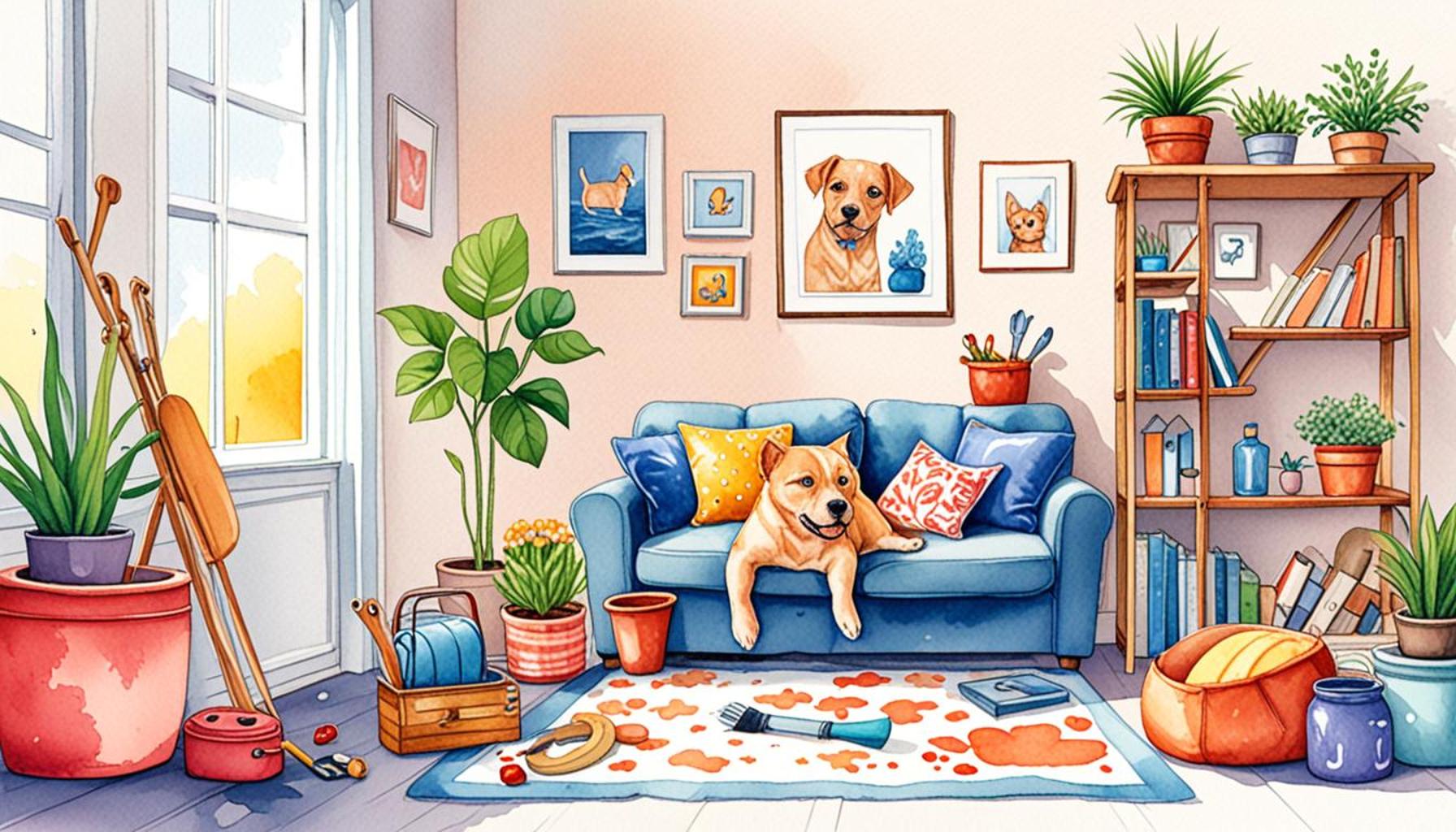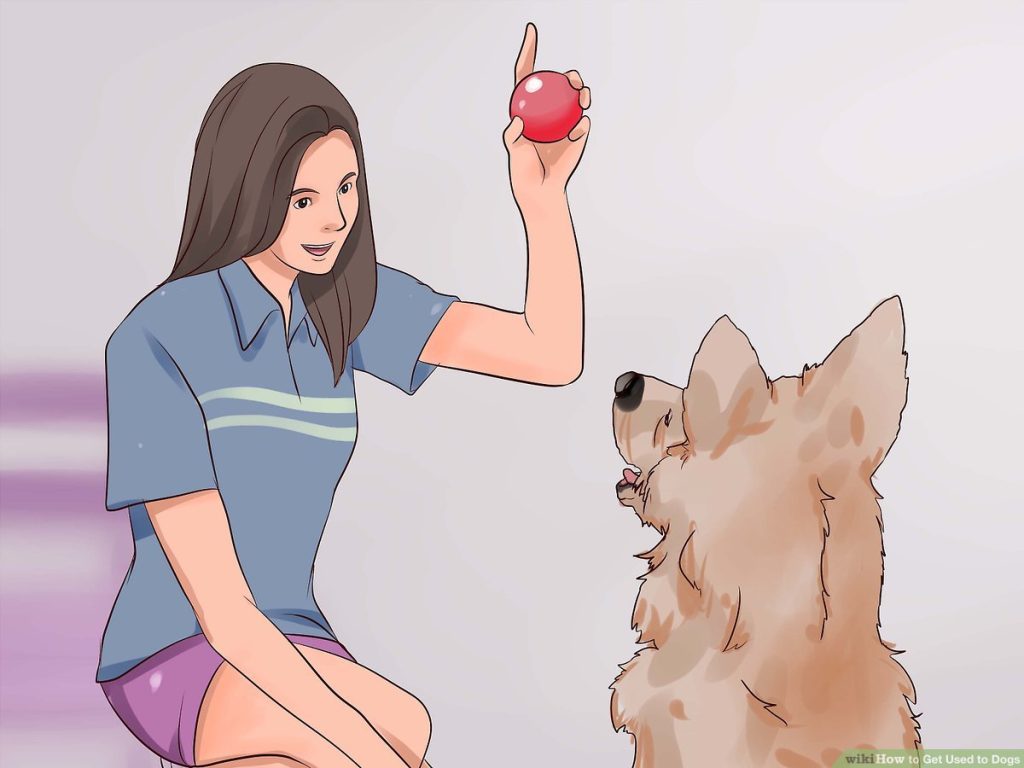How to Prepare Your Home for the Arrival of an Adopted Pet: Resources and Practical Tips for a Smooth Transition

Setting the Stage for Your New Companion
Adopting a pet is more than just an act of kindness; it’s a commitment to enriching your life with joy, loyalty, and, most importantly, companionship. The moment you decide to welcome a furry family member, you embark on an exciting journey filled with new experiences and emotional fulfillment. As you prepare to open your home to this four-legged friend, it’s vital to lay the groundwork to ensure a seamless transition. This means creating a safe and welcoming environment tailored to their specific needs.
Safety Measures
Your home may not be a pet-proof fortress yet, which is why addressing safety is paramount. Begin by identifying potential hazards such as electrical cords, household chemicals, and sharp objects. Consider investing in child-proof locks for cabinets containing cleaning supplies and securely storing medications out of reach. Not only will this protect your pet from accidental ingestion, but it will also offer you peace of mind as you settle into life together.
Comfort Zones
Every pet needs a spot where they can retreat and feel secure. Designate a corner in your home as their comfort zone, complete with soft bedding and familiar items like toys or blankets. This area should be quiet and away from bustling household activities, helping your new companion adjust to their new environment at their own pace. For example, some pets appreciate a cozy crate lined with a soft blanket, where they can feel safe and grounded.
Essential Supplies
Before your pet arrives, ensure you are well-stocked with essential supplies. This includes a sturdy food and water bowl, nutritious food suited to their age and breed, interactive toys to keep them engaged, and a comfortable bed that will soon become their favorite resting place. Don’t overlook grooming tools, which are especially important for certain breeds. For instance, if you’re adopting a dog with long fur, make sure you have a quality brush ready to keep their coat healthy.
Training Tools
Equipping your home with the right training tools will set both you and your pet up for success. Basic items such as a leash and collar are essential, but consider additional training aids like clickers or treat bags. These tools can significantly enhance learning during obedience training sessions. Establishing rules and boundaries from the start can prevent behavioral issues down the line — and create a harmonious living arrangement.

Health Considerations
One of the most important steps in welcoming your pet is scheduling an initial visit to the veterinarian. This health check will not only give you important insights into your pet’s condition but also allow for vaccinations and preventive care measures. Depending on the age and breed of your new addition, vaccinations, spaying or neutering, and general wellness exams are essential for maintaining their health and longevity. The American Veterinary Medical Association provides excellent resources for finding a local veterinarian who can help guide you through this process.
By implementing these strategies, you can alleviate stress for both yourself and your new furry family member. Preparing your home thoughtfully fosters a sense of security that allows for increased trust and a loving bond right from day one. Join us as we delve deeper into our comprehensive guide, showcasing expert advice, useful resources, and interesting anecdotes to ensure that your home becomes a true sanctuary for your new companion!
DISCOVER MORE: Click here for essential tips
Creating a Welcoming Atmosphere
As you prepare for the arrival of your adopted pet, establishing a welcoming atmosphere is crucial for helping them adjust to their new home. Every pet, whether a cat, dog, rabbit, or any other companion animal, comes with its own set of needs, fears, and personality traits. Understanding how to cater to these needs can significantly enhance their transition and, ultimately, your bond together. Here are several important factors to consider.
The Importance of Routine
Animals thrive on routine; therefore, establishing a daily schedule can provide them with a sense of security. Plan regular feeding times, exercise/checking times, and playtime into your day-to-day routine. This consistency helps them acclimate to their new environment. For instance, you could create a timeline like this:
- Morning: Morning walk or playtime followed by breakfast.
- Midday: Quiet time for rest and bonding.
- Evening: Exploration time or fun training games, followed by dinner.
This structure not only benefits your pet but provides a framework for you as well. Knowing what to expect from the day can reduce anxiety on both sides.
Designing an Inviting Space
In addition to safety and comfort, creating an inviting space is essential. When setting up your home, think about the layout and positioning of your pet’s essentials. Ensure their food and water dishes are in a low-traffic area to prevent disturbances, and place their bed or crate where they can observe their surroundings without feeling overwhelmed. Here are a few tips:
- Outside Access: If you have a dog, ensure there’s a clear path for them to go outside for bathroom breaks. Installing a doggy door could be beneficial.
- Zone Off Areas: Use baby gates or pet pens to create boundaries for your new furry friend and important areas in your home to help foster good habits.
- Cuddle Corner: Designate a comfortable space where you can cuddle or play with your pet; this will blend training with bonding.
Pet-Proofing Your Home
Before your pet arrives, it is essential to conduct a thorough inspection of your home to ensure it is pet-proofed. This proactive measure can prevent many accidents that could otherwise hinder your pet’s adjustment and lead to stress for both of you. Be vigilant about the following:
- Secure heavy furniture or TVs that could tip over.
- Cover outlets and tuck away cords to avoid chewing.
- Remove small items that could be ingested, like coins, buttons, or plastic bags.
- Check houseplants that may be toxic to pets and either relocate them or safely dispose of them.
By taking these initial steps to prepare your home, you create an environment that fosters safety, comfort, and a sense of belonging for your newly adopted pet. This thoughtful preparation will set the stage for a nurturing relationship built on trust from day one. In the next section, we will explore effective training techniques and the importance of socialization in helping your pet acclimate to their new family. Stay tuned for more insights!
| Preparation Steps | Tips for Success |
|---|---|
| Create a Safe Space | Designate an area for your new pet to retreat and feel secure, using cozy bedding and favorite toys. |
| Remove Hazards | Ensure electrical cords, toxic plants, and small objects are safely stowed away to prevent accidents. |
| Stock Up on Supplies | Gather essential items like food, bowls, a leash, and a crate to make the transition smooth. |
| Introduce Gradually | Allow your adopted pet to explore the home slowly to minimize stress and encourage familiarity. |
| Schedule a Vet Check | Arrange a visit to the veterinarian shortly after adoption to ensure good health and discuss vaccinations. |
Incorporating these practical steps is essential for a seamless adjustment for both you and your new furry family member. Proper preparation not only enhances the comfort of your home but also contributes significantly to the emotional well-being of your adopted pet. Just as you would child-proof your home for a new baby, preparing your environment is key to fostering a calm, secure atmosphere. By taking proactive measures, you’re setting the stage for a lifelong bond that thrives on trust and love. It’s your first chance to show them just how welcoming your home can be!
LEARN MORE: Click here for insights on homemade pet diets
Training and Socialization Strategies
Once you have set the foundation for a welcoming atmosphere, the next step in preparing for your adopted pet is focusing on training and socialization strategies. These components are vital in helping your new companion acclimate to your home and expanding their understanding of acceptable behavior and boundaries. Whether you’re welcoming a puppy, a rescue dog, or a social cat, engaging in positive training exercises will enhance your pet’s confidence and create a bond built on trust.
The Power of Positive Reinforcement
The principle of positive reinforcement is simple yet powerful. By rewarding your pet with treats, praise, or affection when they display desired behaviors, you encourage them to repeat those actions. This method is not only effective but also fosters a loving relationship. Here are some practical tips on implementing positive reinforcement:
- Identify Motivators: Find out what your pet loves, whether it’s treats, toys, or playtime, and use these as rewards during training.
- Be Consistent: Use the same cues and commands regularly to avoid confusing your pet. For instance, clarify your commands for ‘sit,’ ‘stay,’ or ‘come’ by using the same word and tone every time.
- Short Training Sessions: Keep training sessions brief to maintain your pet’s attention. Start with sessions of 5-10 minutes, gradually increasing the duration as your pet becomes more engaged.
Experts in animal behavior recommend starting with basic commands first, as this builds a solid foundation for more advanced training. Additionally, using clicker training can enhance communication and timing, helping your pet connect actions with rewards more effectively.
Socialization: The Key to a Well-Adjusted Pet
For dogs and even some cats, socialization is essential in helping them build confidence and reduce fear in new situations. Exposing your pet to different environments, people, and other animals in a controlled and positive manner can yield significant benefits. Here’s how to implement effective socialization strategies:
- Gradual Introductions: Start at home by introducing your pet to various sounds (like the vacuum or television) and smells in a calm setting before gradually venturing outside.
- Public Outings: Once comfortable, explore dog parks, pet stores, or local trails. Choose quieter times for your first excursions to minimize overstimulation.
- Playdates: Arranging playdates with other friendly, vaccinated pets can provide crucial social skills. Supervised interactions allow your pet to learn proper play and communication.
Remember that patience is key during this process. Some pets may take time to warm up to new experiences, which is perfectly normal. As they become more accustomed to novel scenarios, you’ll likely witness improved confidence and adaptability.
Enlisting Professional Help When Needed
In some cases, your new pet may require additional support. If you notice signs of anxiety or fear, consider enlisting the help of a professional trainer or a veterinary behaviorist. These experts can offer targeted strategies and behavioral modification plans tailored to your pet’s unique challenges. There are numerous resources available to pet owners, including local classes or virtual training programs that may enhance your efforts.
As you pursue effective training and socialization methods, remain observant of your pet’s reactions and progress. Each step you take significantly contributes to creating a loving, stable environment for your adopted pet, further solidifying their belonging in your family. The forthcoming segments will tackle important matters like routine healthcare and preparing for unexpected challenges in your journey as a pet parent. Keep reading to discover more essential insights!
DISCOVER MORE: Click here to learn about your pet’s emotional well-being
Conclusion: Embracing Your New Family Member
Preparing your home for the arrival of an adopted pet is an exciting journey filled with anticipation and love. As you’ve explored, creating a welcoming environment is the first step in ensuring your pet feels secure and comfortable. From setting up a designated space to stocking up on essential supplies, every detail counts in making your home a haven for your new companion.
Furthermore, the importance of training and socialization cannot be overstated. These strategies not only promote good behavior but also enhance the bond you will share. Employing positive reinforcement and gradual exposure to new experiences will pave the way for a confident and well-adjusted pet. Remember to be patient and observant; each pet adjusts at their own pace, and your understanding plays a crucial role in this transition.
As you embark on this rewarding journey, don’t hesitate to seek support when needed. Utilizing professional resources such as trainers or behavioralists can offer invaluable help and guidance tailored to your specific situation. The adoption process is not merely about bringing a pet home; it’s about nurturing a lifelong relationship built on trust and companionship.
In conclusion, by following the practical tips and strategies discussed, you are setting the stage for a smooth transition and a joyful future with your adopted pet. Take each step with care, and relish the love and happiness that your new family member will undoubtedly bring. Your adventure is just beginning—embrace it with an open heart!



